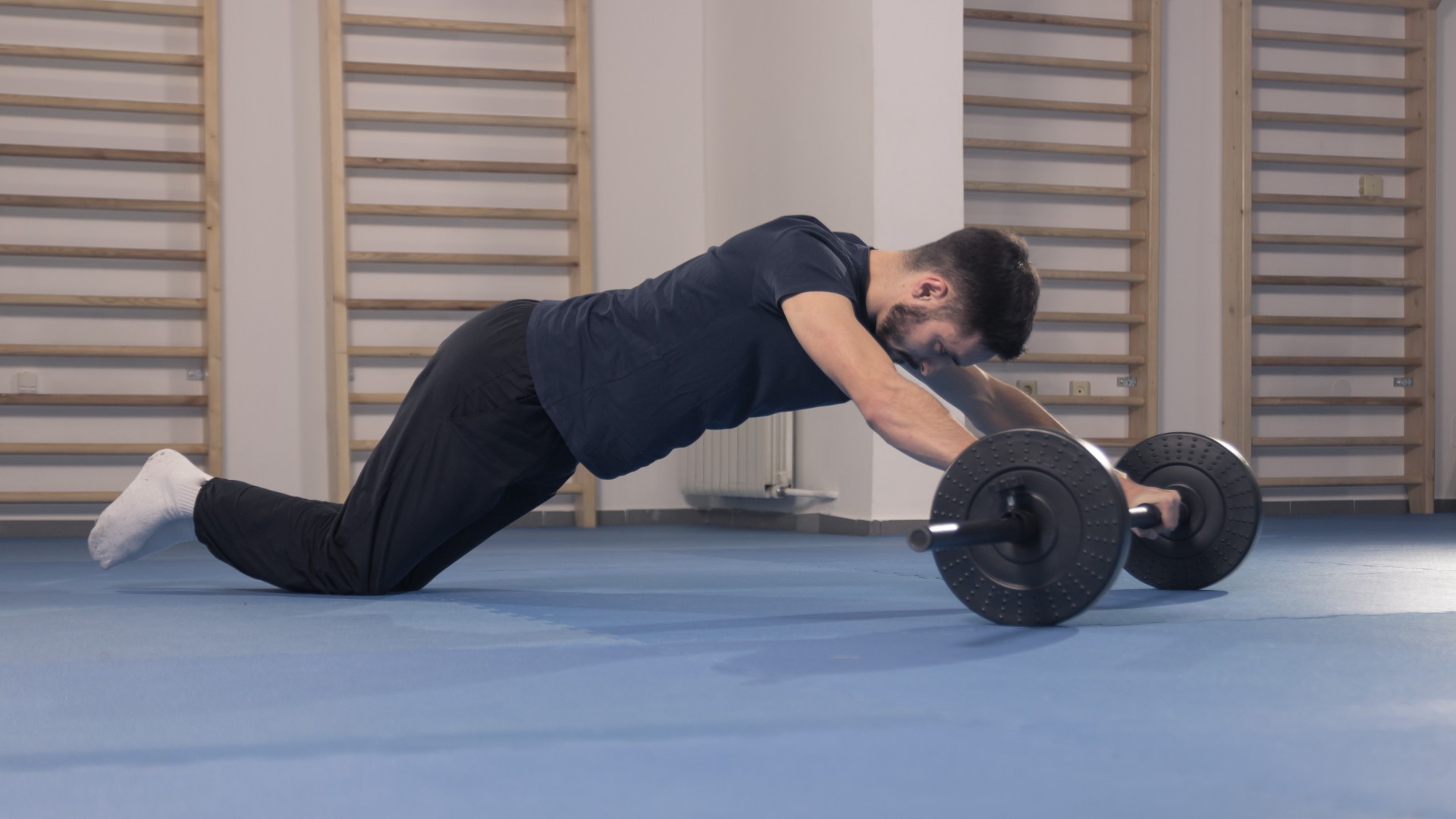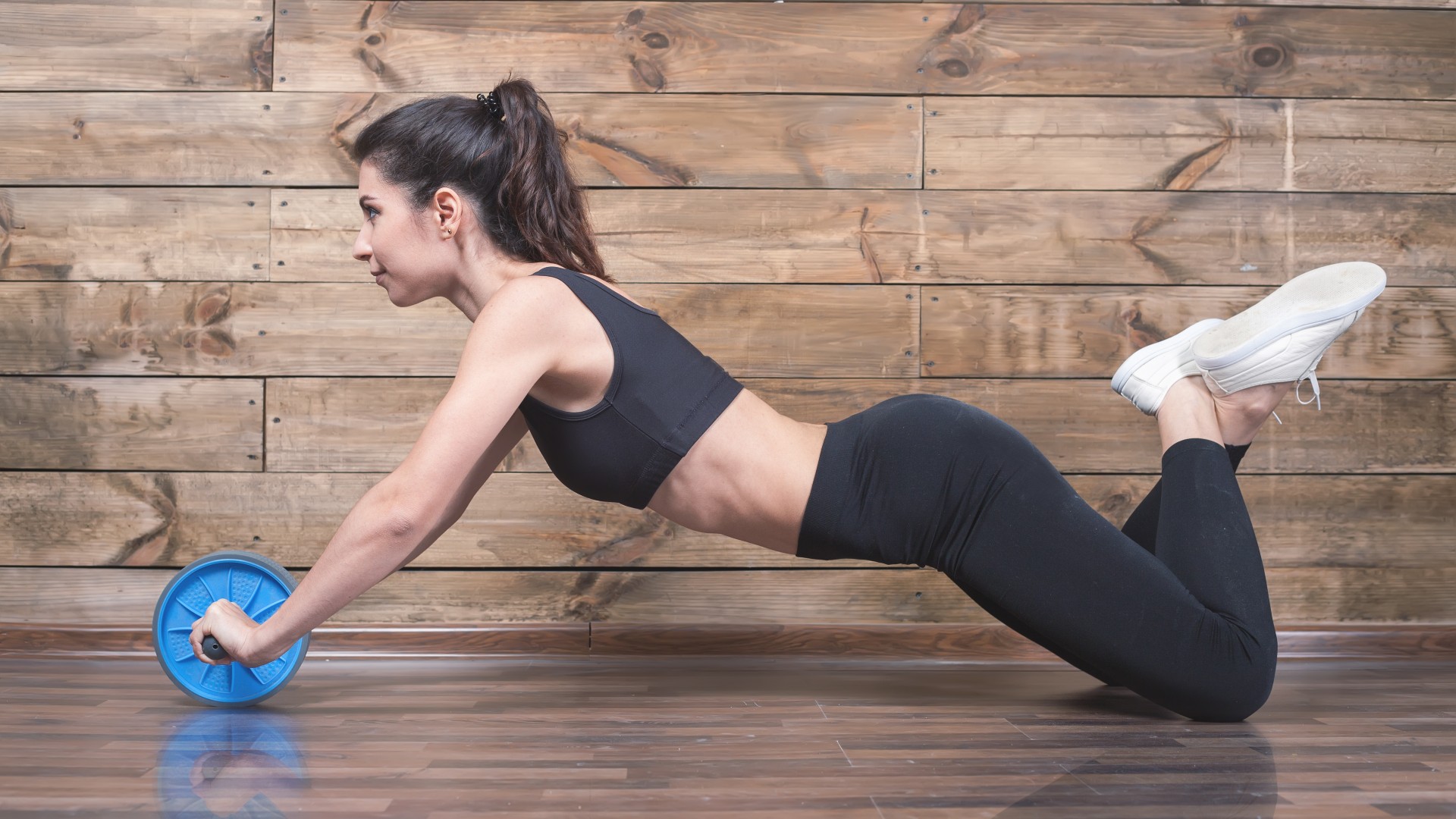
The ab wheel rollout is one of the toughest ab exercises, but have you tried the barbell ab rollout? This variation on the traditional ab wheel rollout is more suitable for some and harder for others, so below, we cover why.
Barbell ab rollouts involve the same movement and work the same muscle groups — namely, your rectus abdominal muscles, shoulders, arms, erector spinae (spine stabilizers), transverse abdominis (deeper core muscles), lats and chest. But this time, you replace the ab wheel with a loaded barbell.
It’s time to get stuck into one of the best ab exercises. Below, we cover the benefits of barbell ab rollouts, how to do them and the benefits for strengthening your core muscles.
Barbell ab rollouts: Benefits and muscles worked
This is a true compound exercise. Most of your core muscles are at work during the ab rollout exercise. The effort requires stabilizer muscles to work, meaning your rotator cuffs (a group of muscles that support your shoulders), erector spinae (muscles that hug and support the spine) and deeper core muscles (like the transverse abdominis) activate.
But there are many more muscles at work, including your chest, shoulders, lats and hip flexors. The research even shows your chest muscles engage more during ab rollouts than your lats.
Strong core muscles come with plenty of benefits, including a more robust torso, better mobility, lifting heavier weights, better posture and protecting your lower back with less chance of exercise-related injuries.
Ab rollouts hit the front of your body hard, but you’ll need some existing shoulder and core strength to do them because it’s easy to dip into your lower back or lose control and hurt your shoulders. I did 50 ab wheel rollouts every day for a week — here’s what happened.
Sign up to get the BEST of Tom's Guide direct to your inbox.
Get instant access to breaking news, the hottest reviews, great deals and helpful tips.
How to do barbell ab rollouts
To perform the barbell ab rollout, you need a barbell loaded with at least one plate on either side to create resistance.
How:
- Start on your knees and grip the barbell shoulder-width distance apart
- Engage your core, shoulders and glutes, then shift your weight forward so that your shoulders are over the bar and tuck your pelvis under to create a soft hollow hold shape
- Slowly roll the barbell forwards as far as you can, with control
- Keep your shoulders engaged and hips lifted
- Pause, then roll the wheel back to your starting position.
Barbell ab rollouts: Common mistakes
Many ab wheels are built with coil springs to add resistance or help control the rollback, but the barbell is heavier and harder to roll out for many people. For others, a wider bar is easier to grip and navigate than thinner, wobbly ab wheels.
If you have shoulder problems, the move could be off the table altogether, but the barbell ab rollout might be worth trying as a bridging ab rollout exercise. Here are some common mistakes.
Dropping the hips
As you roll the barbell away from you, it’s common to drop the hips. Keep your stomach braced and hips lifted and aligned with your shoulders at full extension.
Lack of core engagement
A lack of tension in your core muscles could encourage the hips to drop and send the exercise straight to your lower back. Practice compound contraction, squeezing as many muscle groups as possible while focusing on the back, belly and bum throughout both phases of the ab rollout.
Shoulder positioning
As you roll forward from the starting position, prevent the barbell from traveling too far ahead and keep your shoulder weight bearing over the bar. If your shoulders start too far back, you’ll place more tension through your arms and shoulders, potentially hurting your joints.
Shift your weight forwards, start with your shoulders over the wrists and slightly tuck your pelvis under.
Range of motion
The instability of rolling the bar away from you, then driving it back challenges your core and shoulder muscles to maintain control. It’s a hugely effective ab exercise to build strength and muscle.
Your range of motion (in this case, how far you can roll out) will depend on shoulder mobility and, as we mentioned, some existing shoulder and core strength. Try to roll further as you build strength and ability, only going as far as feels comfortable. If your hips drop or your shoulders or back hurt, reduce range of motion, and if pain persists, stop immediately.
Barbell ab rollout: Variations
Here are two variations to try if you want to mix things up.
Ab wheel rollouts

“Traditional” ab wheel rollouts seriously test stability, control, balance, coordination and strength. You can find the move in some of the best ab workouts.
Standing ab workouts

Most people prefer doing ab rollouts kneeling, but for the more advanced option, try them standing up. Your knees provide far more support for your body. Without that, your body must work much harder.
Either way, the barbell ab rollout exercise can strengthen and help define your midsection. But remember, building a toned tum comes down to more than one exercise — fact or fiction? Ab definition workouts exist.
More from Tom's Guide

Sam Hopes is a level 3 qualified trainer, level 2 reiki practitioner and senior fitness writer at Tom's Guide. She is also currently undertaking her Yoga For Athletes training course. Sam has written for various fitness brands and websites over the years and has experience across brands at Future such as Live Science, Fit&Well, Coach, and T3.
Having worked with fitness studios like F45 and Virgin Active, Sam now primarily teaches outdoor bootcamps, bodyweight, calisthenics and kettlebells. She also coaches mobility and stretching-focused classes several times a week and believes that true strength comes from a holistic approach to training your body.
Sam has completed two mixed doubles Hyrox competitions in London and the Netherlands and finished her first doubles attempt in 1:11.

